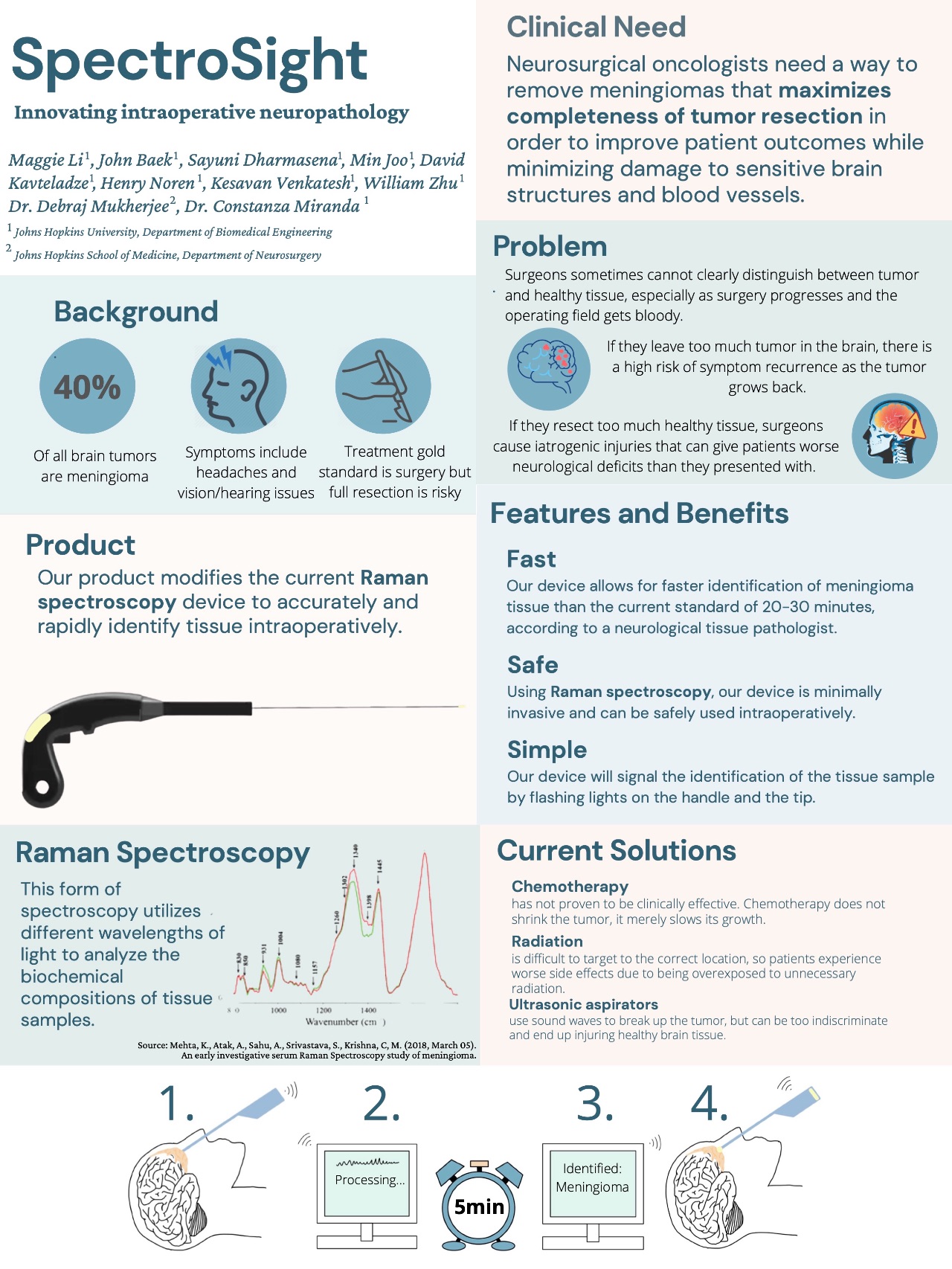Maximizing intraoperative meningioma resection via precise tool-tissue force sensing
Team: BME Design Team: SpectroSight
- Program: Biomedical Engineering
- Course:
Project Description:
According to the American Association of Neurological Surgeons, meningiomas are the most common type of brain tumor, accounting for nearly 40% of all cases. Afflicted patients present debilitating symptoms such as headaches, seizures, and loss of vision, hearing, or muscular control. These symptoms can drastically reduce quality of life during prime working years. The standard of care for meningioma patients is surgery, where the amount of tumor left by the surgeon positively correlates with chance of recurrence. Currently, surgeons rely on their experience to distinguish between meningioma and healthy tissue by using observable physical properties characteristic of meningiomas, such as its stiffer texture; however, this can get difficult towards the end of meningioma dissection where small pieces of embedded tumor tissue are prevalent, as these differences become imperceptible to human tactile sensation. Therefore, there exists a need for a surgical tool that can offer precise real-time delineation of cancerous brain tissue from healthy brain regions. Our solution is the Pathoprobe—a handheld surgical device that enables surgeons to intraoperatively differentiate between healthy and meningioma tissue by analyzing well-validated tissue properties. Pathoprobe is modeled after the Mcleeven knife, a tool commonly used in craniotomy and endoscopic endonasal neurosurgical workflows, making it well-poised for market launch. Our tool empowers clinicians to reduce damage to sensitive brain structures and improve tumor resection, alleviating symptoms and reducing the need for additional surgeries for tumor regrowth.



